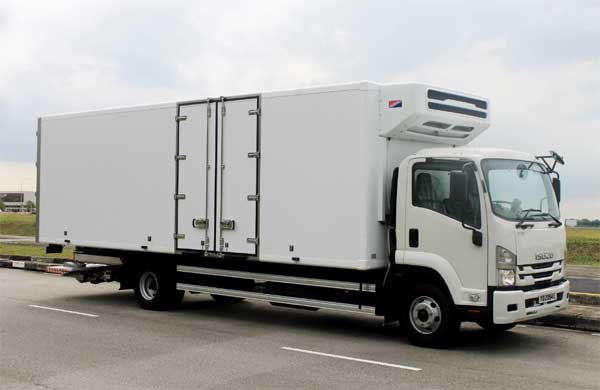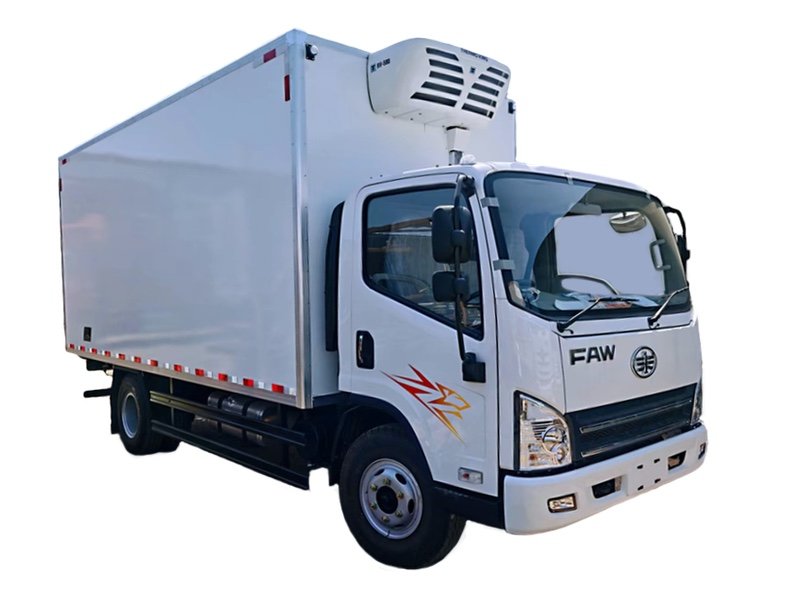Thermo King Truck Refrigeration Units: Ideal Choices for Temperature Control
Thermo King Truck Refrigeration Units: Ideal Choices for Temperature Control
Blog Article
Top Innovations in Transport Refrigeration: Enhancing Performance and Safety
The landscape of transportation refrigeration is undergoing significant improvement, driven by technologies focused on boosting both performance and safety and security. Secret innovations such as clever temperature level surveillance systems, environmentally friendly cooling agents, and automated course optimization are critical in addressing the sector's challenges. These modern technologies not only ensure the honesty of temperature-sensitive products however additionally contribute to sustainability initiatives. As these advancements remain to progress, it is necessary to explore their implications on operational practices and regulative conformity, motivating a better evaluation of exactly how they improve the future of transport refrigeration.
Smart Temperature Level Checking Equipments
In the realm of transportation refrigeration, wise temperature level monitoring systems have actually become an important development for ensuring the honesty of temperature-sensitive items. These sophisticated systems leverage Internet of Things (IoT) modern technology to provide real-time information on temperature level changes, making it possible for operators to maintain optimum conditions throughout the supply chain. By continually tracking the temperature of cooled containers and vehicles, business can swiftly recognize variances that may jeopardize item quality.

Moreover, smart tracking systems typically include automated notifies and notifications, permitting stakeholders to react promptly to any type of potential issues. This positive method not only reduces the threat of perishing however additionally improves conformity with governing requirements controling food security and pharmaceutical transport.
The assimilation of data analytics within these systems additionally helps with predictive maintenance, aiding drivers to anticipate potential devices failures prior to they happen. This capacity lowers downtime and enhances operational efficiency, inevitably leading to cost financial savings.
Eco-Friendly Refrigerants
Smart temperature tracking systems play an important role in maintaining product quality, but the effectiveness of transportation refrigeration also pivots on the choice of refrigerants utilized. In comparison, emerging alternatives like hydrocarbon-based cooling agents and hydrofluoroolefins (HFOs) existing lower GWP options, using both efficiency and sustainability.
These environment-friendly refrigerants not only decrease environmental influence but likewise line up with international regulations intended at eliminating unsafe compounds. Their fostering can bring about boosted power performance, eventually minimizing operating expense for transport refrigeration systems. The use of natural cooling agents, such as ammonia and carbon dioxide, has actually acquired grip due to their excellent thermodynamic residential or commercial properties and lower environmental footprint.
Purchasing green cooling agents is not just a governing conformity step; it represents a critical decision that improves brand online reputation and fosters client commitment. refrigerated transportation thermo king. By focusing on lasting techniques, firms can contribute to a greener future while making certain the integrity of transferred products
Advanced Insulation Products
Using advanced insulation products is important for enhancing transportation refrigeration systems, as they substantially enhance energy performance and maintain regular temperature level control. Traditional insulation methods frequently drop short in avoiding thermal transfer, causing boosted power intake and changing temperature levels within cooled compartments.
Arising products such as vacuum cleaner shielded panels (VIPs) and aerogels provide superior thermal resistance, permitting thinner accounts without compromising efficiency. VIPs, as an example, make use of a vacuum layer to lessen convective and conductive heat transfer, making them excellent for space-constrained applications. Aerogels, recognized for their light-weight and porous framework, give exceptional insulation while significantly lowering overall system weight.
Moreover, incorporating phase modification products (PCMs) into insulation systems can additionally support temperature levels throughout transportation. These products absorb and release thermal power, successfully buffering versus outside temperature level variations.
The combination of these sophisticated insulation products not only minimizes the functional costs associated with my blog energy consumption yet additionally prolongs the service life of temperature-sensitive products. As the transport refrigeration industry remains to evolve, the fostering of ingenious insulation technologies will be pivotal in enhancing both efficiency and security in refrigerated transport.
Automated Course Optimization
The performance of transportation refrigeration systems is considerably boosted with automated route optimization, which leverages real-time data and sophisticated formulas to determine one of the most efficient paths for shipment. By examining various factors such as web traffic patterns, weather condition problems, and shipment home windows, these systems can considerably minimize travel time and fuel usage.
Automated path optimization lessens human mistake and subjective decision-making, which can bring about ineffectiveness. This innovation enables fleet supervisors to assign sources better, ensuring that cooled goods keep their required temperature level throughout the journey. By enhancing courses, firms can additionally enhance consumer complete satisfaction through timely shipments.
Furthermore, automated systems can adjust to unexpected conditions, such as roadway closures or abrupt traffic spikes, enabling for vibrant rerouting. This versatility not just secures the honesty of temperature-sensitive items but also adds to general functional performance.
Applying automated path optimization can cause substantial expense savings while lowering the carbon impact linked with transportation. As companies increasingly prioritize sustainability, this development sticks out as an essential component in contemporary transport refrigeration, lining up operational goals with ecological obligation. Ultimately, automated path optimization represents a significant innovation in the mission for efficiency and security in transport refrigeration.

Real-Time Information Analytics
Automated path optimization substantially take advantage of the integration of real-time information analytics, which gives vital understandings right into the efficiency of transport refrigeration systems. By using real-time data, transportation operators can keep an eye on temperature fluctuations and equipment performance, guaranteeing that perishable items are maintained within called for criteria throughout transportation. This aggressive approach not just boosts the high quality of the delivered items but also minimizes the threat of wasting and loss.

Along with enhancing performance, real-time analytics boosts safety by making certain conformity with governing requirements for temperature control. This not only shields public health and wellness yet also strengthens a business's online reputation - thermo king truck refrigeration units. As the transport refrigeration sector progresses, the combination of real-time data analytics arises as a cornerstone for driving development, sustainability, and operational excellence
Final Thought
In conclusion, the developments in transport refrigeration considerably boost both efficiency and safety within the industry. Collectively, these innovations represent an important development in transport refrigeration, ensuring compliance with regulative criteria and promoting a greener future.
The landscape of transport refrigeration is going through considerable transformation, driven by innovations intended at improving both efficiency and safety.Smart temperature surveillance systems play a vital function in keeping product quality, but the performance link of transport refrigeration also pivots on the option of refrigerants used. Their adoption can lead to enhanced power performance, ultimately reducing operating costs for transportation refrigeration systems. Ultimately, automated route optimization represents a substantial innovation in the mission for effectiveness and safety in transportation refrigeration.
In final thought, the advancements in transportation refrigeration significantly boost both effectiveness and safety and security within the sector.
Report this page